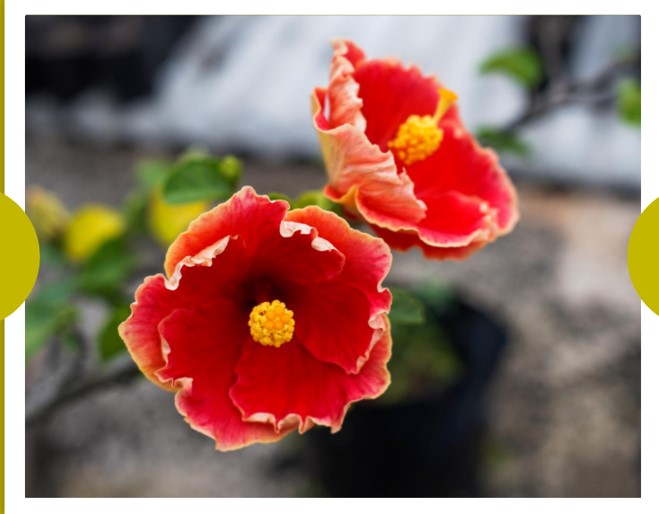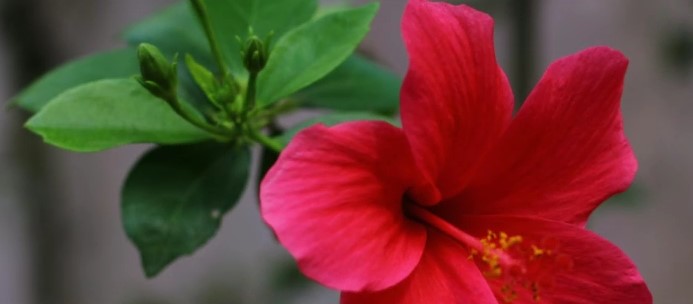“The Splendid Hibiscus Flower: Beauty, Uses, and Symbolism”-By Kalani-eLanka

The hibiscus flower, with its vibrant petals and unique charm, is a botanical marvel that has captured the hearts of people around the world. Known for its stunning appearance and diverse uses, the hibiscus is more than just a pretty face; it holds cultural, medicinal, and culinary significance that stretches across continents. In this article, we will delve into the fascinating world of the hibiscus flower, exploring its beauty, uses, and symbolism.
The Allure of Hibiscus: A Feast for the Eyes
One of the most enchanting aspects of the hibiscus flower is its captivating appearance. These flowers come in an array of colors, including shades of red, pink, yellow, and white, with some varieties boasting multi-colored petals. The petals are typically broad and ruffled, forming a stunning contrast with the dark green foliage.
The hibiscus flower is often referred to as “queen of the tropics” due to its association with warm, tropical regions. In these areas, it thrives under the sun, creating a burst of color against the lush green backdrop of its surroundings. Hibiscus blossoms can be found in various forms, from single-layer petals to double-layered and even semi-double varieties. Each bloom is a testament to nature’s artistry.
Cultural Significance: The Hibiscus Across the Globe
Throughout history, the hibiscus flower has held special significance in the cultures of many nations. Here are a few notable examples:
- Hawaii: The hibiscus is the state flower of Hawaii and symbolizes the natural beauty and spirit of the islands. It is often used in leis and as an ornamental flower in Hawaiian culture.
- China: In China, the hibiscus represents fame, wealth, and glory. It is a popular motif in art and is associated with feminine beauty.
- India: Hibiscus is an integral part of Ayurvedic medicine and is used in hair care products, particularly for its nourishing and conditioning properties.
- Sudan: The hibiscus flower, known as “karkade,” is used to prepare a popular drink that is not only refreshing but also known for its potential health benefits.
Hibiscus in Medicine and Culinary Delights
Beyond its aesthetic appeal, the hibiscus flower offers a wealth of practical uses. In traditional medicine, hibiscus extracts have been used for their potential health benefits. Some of the reported advantages include:
- Blood Pressure Regulation: Hibiscus tea has been studied for its potential to help lower blood pressure due to its natural diuretic properties.
- Antioxidant Rich: The flower is rich in antioxidants, which can help combat free radicals in the body and support overall health.
- Hair and Skin Care: Hibiscus extracts are often used in cosmetics and hair care products for their moisturizing and anti-aging properties.
Additionally, hibiscus is a versatile culinary ingredient. Hibiscus petals are used to make jams, jellies, and sauces, and the tart, cranberry-like flavor is the star of hibiscus tea, a popular beverage consumed around the world.

The hibiscus flower is not only culturally significant but also holds personal meaning for many. It often symbolizes beauty, femininity, and delicate charm. When gifted, it can convey messages of love, admiration, and good wishes. In various regions, hibiscus flowers are offered to deities during religious ceremonies, signifying purity and devotion.
In conclusion, the hibiscus flower is a remarkable testament to nature’s creativity and beauty. Its versatility, cultural significance, and potential health benefits have made it a cherished and revered flower in many parts of the world. Whether you admire it for its visual splendor, use it in your wellness routine, or appreciate its cultural and symbolic importance, the hibiscus is undeniably a floral treasure worth celebrating.







